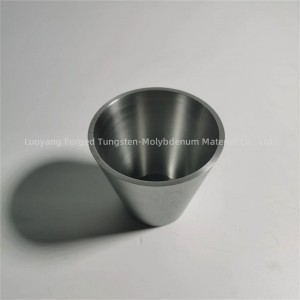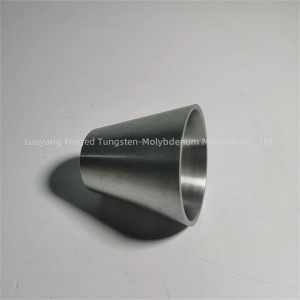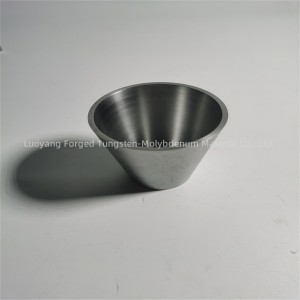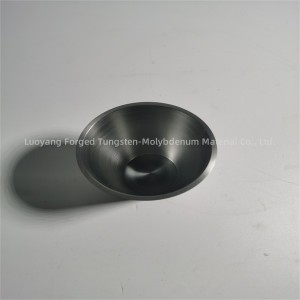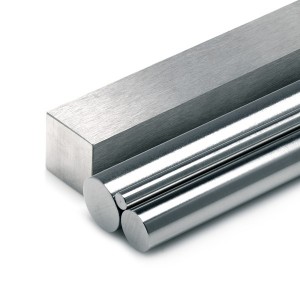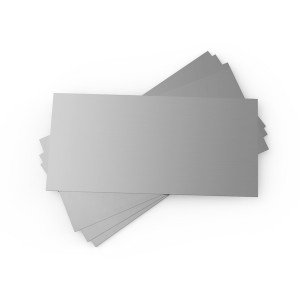bright seamless zirconium crucible for melting metal
Zirconium crucibles have a high temperature range, making them suitable for a variety of industrial applications involving metal melting and other high-temperature processes. The temperature range of zirconium crucibles typically extends from room temperature to approximately 2400°C (4352°F). This high temperature capability makes zirconium crucibles ideal for melting high melting point metals such as titanium, nickel and other refractory metals.
Additionally, zirconium’s corrosion resistance and ability to withstand high temperatures make it a valuable material for applications in extreme conditions.

Alumina and zirconia crucibles are both commonly used in high temperature applications, but they have some significant differences:
1. Material composition:
- Alumina crucibles are made of aluminum oxide (Al2O3), a ceramic material known for its high thermal conductivity and excellent chemical resistance.
- Zirconia crucibles, on the other hand, are made of zirconium dioxide (ZrO2), also known as zirconia. Zirconia has high strength, toughness and resistance to thermal shock.
2. Melting point:
- Aluminum oxide has a high melting point, typically around 2050°C (3722°F), making it suitable for a variety of high temperature applications.
- Zirconia has a higher melting point, typically around 2700°C (4892°F), making it suitable for applications requiring extreme temperatures.
3. Thermal conductivity:
- Aluminum oxide has a relatively high thermal conductivity, which is beneficial in certain applications where efficient heat transfer is important.
- Zirconia has a lower thermal conductivity compared to alumina, which is advantageous in applications requiring thermal insulation.
4. Chemical resistance:
- Aluminum oxide has good chemical resistance, making it suitable for use with many molten metals and harsh chemical environments.
- Zirconia also exhibits excellent chemical resistance, particularly to acidic and alkaline environments, making it suitable for demanding chemical applications.
In summary, while both alumina and zirconia crucibles are suitable for high-temperature applications, the choice between the two depends on specific requirements such as temperature range, thermal conductivity, and chemical resistance.

Wechat:15138768150
WhatsApp: +86 15838517324
E-mail : jiajia@forgedmoly.com


